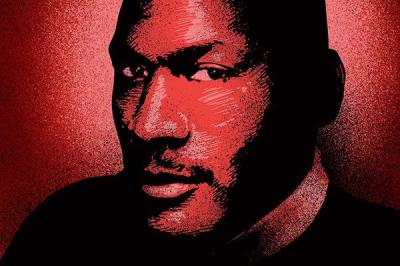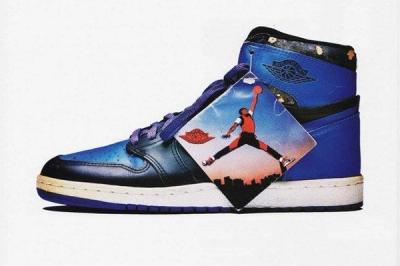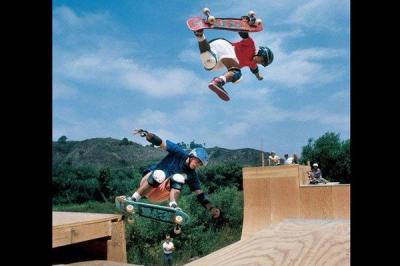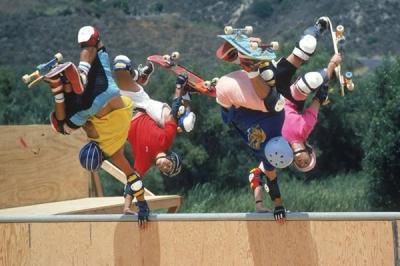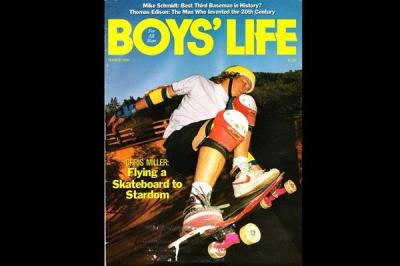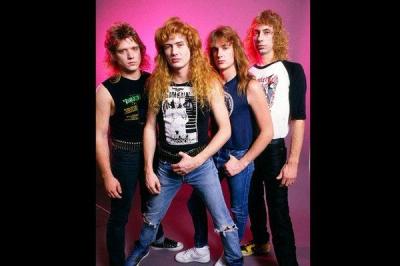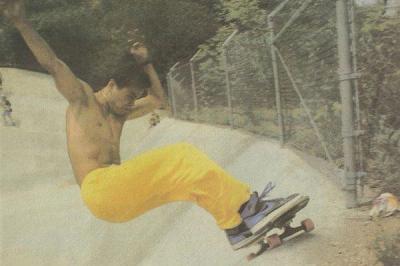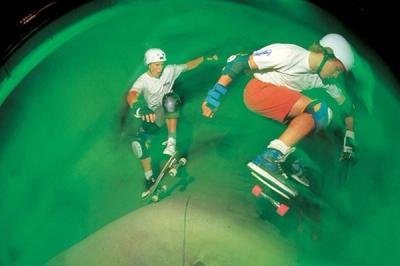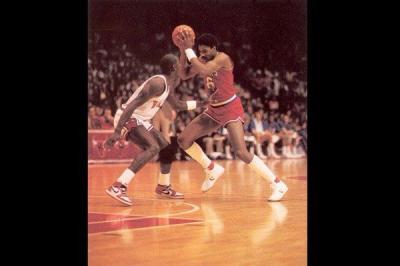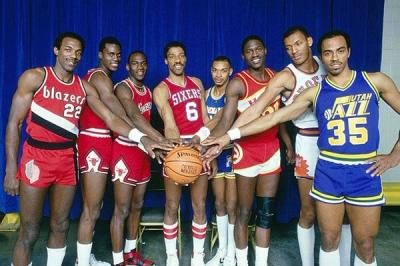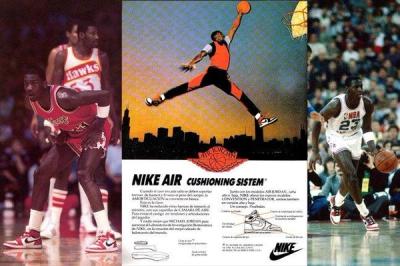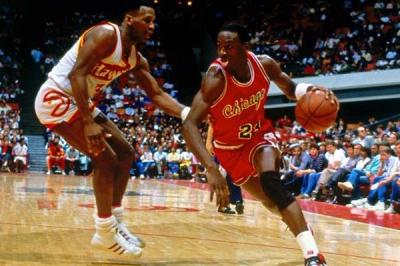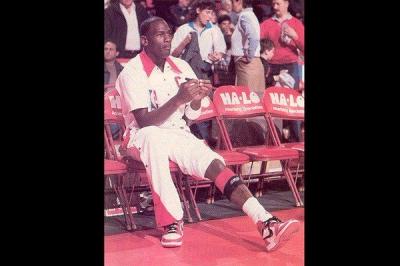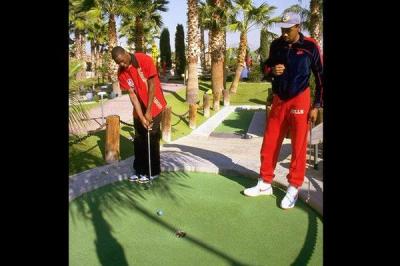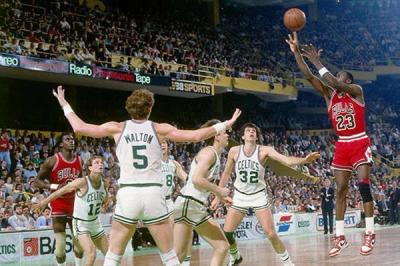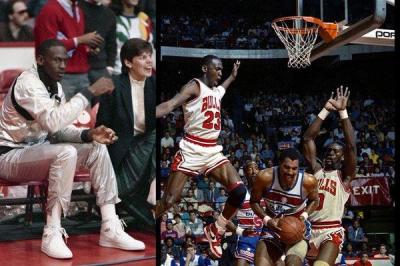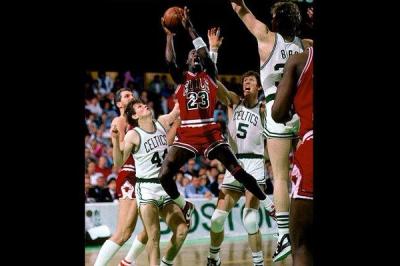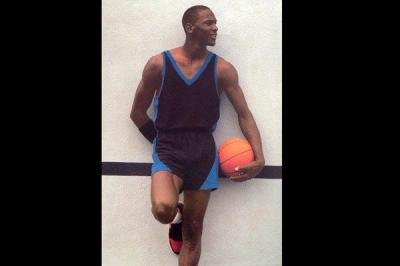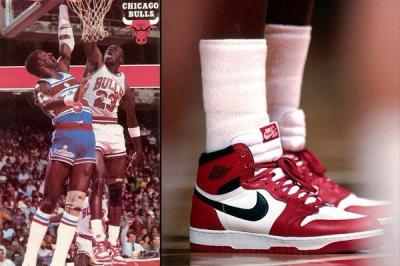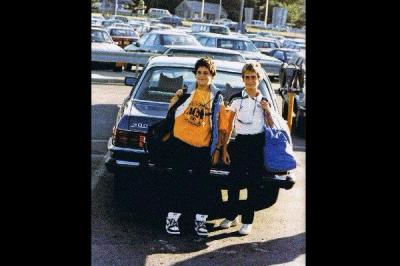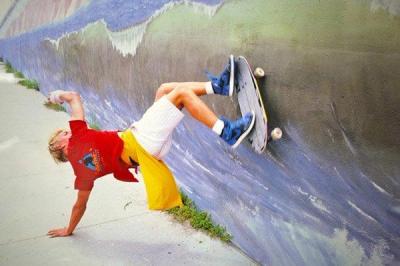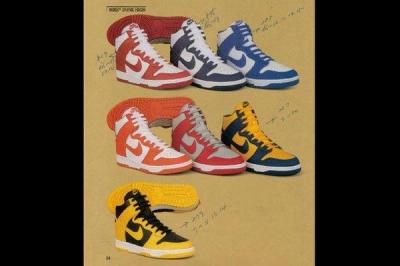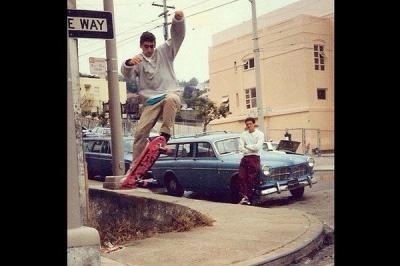The Billion Dollar (Jump)Man: Jordan 1 Retrospective
When Nike signed a rookie named Michael Jordan from North Carolina in 1984, who could have predicted his signature line would become a billion dollar business less than 30 years later?MJ’s background was anything but Nike. Throughout his college years he wore Converse on court with the Tar Heels. The 1984 Olympic team was sponsored by adi and legend has it that Michael wanted to go pro wearing stripes. After listening to Nike’s pitch he was less than impressed by the black and red prototypes which looked like ‘devil colors’. It wasn’t until Mr. and Mrs. Jordan met with Nike executives that he was finally persuaded.
Mike was ready to sign with Nike.
Jordan’s initial contract was reportedly double what the league’s best players were earning at the time. It was also a huge risk for Nike. Basketball fans witnessed him drain the shot that won the 1982 NCAA finals as a freshman, but he had yet to even compete in the NBA. Legendary basketball fixer Sonny Vaccaro convinced Nike that MJ would take the brand to the next level. Vaccaro was right. Jordan seemed to possess the same passionate attitude and respect for athletic competition as Nike’s founder Phil Knight. In 1984 the NBA’s three biggest superstars were all signed to Converse. Dr. J, Larry Bird and Magic Johnson were all earning just over $100,000 from their sneaker endorsement deals. New Balance had just signed Jordan’s North Carolina teammate James Worthy for their newly developed basketball line. Nike desperately needed a superstar in their corner.
Via their now-famous guerrilla marketing, Nike had actually begun to infiltrate all levels of basketball in the early 1980s. Their players always had the freshest sneaks on the court, but more importantly, they were laced head-to-toe in Nike warm-ups, sweat-suits, jackets, bags and caps off the court too. You may think those perks were small change, but to put that into perspective, world champion Laker Kurt Rambis was only making $40k a year at the time. Nike’s biggest basketball names in 1984 were still the same players that featured in the ‘Original Six’ Air Force 1 poster from 1982. Moses Malone was the brightest star on the squad, but the guys were in the twilights of their careers and couldn’t carry the brand like the Converse crew.
During this time, Nike was also beginning to cut deals with college basketball, making sure the most recognizable NCAA coaches were paid to have their teams outfitted in Nikes during nationally televised games. The most prominent coach was Georgetown’s John Thompson, whose Hoyas were a perennial powerhouse thanks to Patrick Ewing. Most people reading this magazine would be familiar with the Nike SB ‘Be True To Your School’ Dunk pack. Those colors represent Nike’s college teams from the same 1984-85 era. In addition to Georgetown, UNLV, Michigan, Iowa, St John’s, Villanova, Kentucky and Syracuse were also involved. Basketball was stepping into a new age of television and marketing where individual superstar players were becoming celebrities and cultural icons. More than ever, Nike needed a new face to represent the brand.
If MJ wouldn’t sign, Nike had a potential back up in the number one overall pick in the 1984 draft: Akeem Olajuwon. The particular reasons why he wasn’t signed are debatable, but I would argue that Nike wasn’t looking to bet all their chips on an untested Nigerian-born center. Besides, Nike’s number one college superstar Patrick Ewing would be in the draft the following year. Maybe that had something to do with it? Curiously Patrick signed to the Three Stripes, but that’s an investigation for another time.
Once Nike decided that Michael Jordan was the chosen one, his agent David Falk negotiated the terms of the deal. It is said that Falk asked Nike to treat his client like a tennis player, rather than a basketball player. What he wanted was Jordan to have his own line of basketball sneakers and apparel. In the mid-1980s, tennis players were making the big endorsement money. adidas had Ivan Lendl’s collection, while Nike was already familiar with this concept thanks to McEnroe and his Mac Attack collection. Tennis players were also dipping into more of a luxury lifestyle with an aesthetic to match.
MJ signed with Nike for $500,000 and a percentage of sales as royalties. This was an unheard of amount for any athlete, let alone a rookie, so the stakes were high. The legendary black and red Air Jordan I was introduced on Michael’s feet during a Chicago Bulls pre-season game in October 1984. I’m sure you’ve all heard the story about them being banned for not complying with the ‘uniformity of uniform’ rule. Needless to say the brouhaha played right into Nike’s hands. Phil Knight was already an outlaw maverick by industry standards and now he had a compadre for McEnroe who could project the same persona for the brand. Nike did eventually create another version of the Air Jordan with some white paneling, which is what he wore during his first two years in the league, but by then the momentum was all Jordan’s way.
Nike also released a royal blue and black combination that was part of the original offering. The apparel that accompanied the sneakers consisted of matching windbreaker-style nylon pants and jackets along with shorts, cotton tees and tanks. The famous wings logo – which was only used for the first two Peter Moore-designed Air Jordans – adorned all the pieces in the collection. Jordan brand will be reissuing these OG pieces along with two original colors of the sneakers this spring, but they’ve unfortunately bypassed the authentic nylon material on the warm-ups in favor of polyester.
Aside from causing a stir with NBA commissioner David Stern, the apparel collection also ruffled some feathers among the NBA’s superstar veterans during the 1985 NBA All-Star Weekend. The young rookie didn’t make a great impression when he performed his first slam dunk of the contest in a Jordan warm-up outfit rather than his Bulls uniform. Additionally, the cheeky rookie came out wearing two gold chains. I would bet there was a fair amount of jealousy amongst the other players that had them prejudging the new kid on the block. The other players were offended that Michael was wearing his own brand which seems like nothing compared to the spectacle this event has become. I wonder what would have happened if Kia was around in 1985? Many historians believe that Michael was intentionally ‘frozen-out’ the next day and purposely not given the ball by his team mates, most notably by Isiah Thomas. Isiah denies the accusation to this day, but do you remember the 1992 Dream Team? Well, you don’t remember Thomas on that team, do you?
Between all of Jordan’s accomplishments on the court and in the air (as well as the controversy), it was impossible to stop Air Jordan hysteria. In the first year Nike sold $130 million worth of gear and stores couldn’t keep the stuff on the shelves. Jordan was a cultural phenomenon in both the cities and the suburbs, but the defining moment came at the Boston Garden in April 1986. After missing the majority of the 1985-86 NBA season with a broken foot, Nike executives were a little worried about the Air Jordan line fizzling out as a result of his absence from national television. Coming back sooner than doctors recommended, MJ helped Chicago secure the final seed in the Eastern Conference playoffs. In his first game back against the Boston Celtics, he casually dropped 49 points. In game two Michael hit a playoff record of 63 points against perennial defensive first-teamer Dennis Johnson and his teammates Larry Bird, Danny Ainge, Kevin McHale and Bill Walton. Following the game Larry Bird told reporters that he just saw God dressed up as Michael Jordan. I was an eight-year old New Jersey white kid and loyal Knicks fan in 1986, and I hated the Boston Celtics. I’m sure this game was a defining moment among basketball fans and urbans everywhere. All of a sudden the entire game of basketball revolved around Michael Air Jordan.
There has never been a more seamless partnership in the history of sneakers and sport. Nike was just about to launch visible Air in 1986 and their biggest superstar seemed to defy the laws of physics. This synergy couldn’t have been more fortuitous. Additionally, this young kid had an edge that was a reflection of Nike founder Phil Knight’s own persona. Both guys were now leading their professions while breaking the antiquated rules set by the establishment. This brash attitude wasn’t something that was only appreciated among sports enthusiasts. Jordans began to infiltrate society on a much larger scale.
First and most obviously, Jordan was adopted by the hip hop community. Check LL Cool J’s Radio album and you’ll notice him on the flip-side in his black and red Js and Kangol cap. Just as hip hop was bum-rushing the suburbs in 86, Jordan also came along for the ride. Fans were used to seeing Jordan and his sneakers fly through the air on the hardwood, but now thanks to the Bones Brigade, these same sneakers were now airborne over empty pools and half-pipes. The combination of their aggressive image and the feel on a skateboard made them a fave among the likes of Mike McGill, Lance Mountain and Tommy Guerrero. If you go back and watch the cult film The Search for Animal Chin, these guys are shredding the streets, pools and ramps in Jordans. Lance Mountain even busted out the black and blues on one foot and the Carolinas on the other. These guys were the shit back in the mid-to-late 80s when Powell Peralta and skateboarding culture had as much influence on fashion as any basketballer. The impact of this partnership was still visible when the Nike SB line debuted their padded Dunks decades later.
Jordans began to appear in the pages of metal magazines alongside Sports Illustrated and Thrasher. Look at 1980s bands like Megadeth, Slayer and Anthrax. Dave Mustaine loved Jordans! High top Nikes were paired with Metallica tees, acid-wash jeans and big hair years before Agassi came onto the scene. Before 1985, Nike was a white-guy jogger and tennis brand. Michael Jordan helped Nike identify with urban outlaws everywhere.
We’ve seen the black and red version released several times over the years, but the immortal red white and black hasn’t graced our feet since its only retro in 1994. I was lucky enough to preview the retro Air Jordan I at a Nike event a few months ago and as soon as I saw them from across the room, I was attracted like Rodman to a wedding dress. At my still tender age of 35, many readers may consider me an ancient fossil, but I’m telling you that I was fortunate to grow up watching the complete evolution of Michael Jordan’s career. Friday night’s TNT Game of The Week was my highlight just for the chance of seeing MJ fly through the air and inspire my own backyard slam dunk contests.
Almost thirty years later, they remain a cultural icon and a holy grail for every single sneakerhead. The significance of the Air Jordan’s original release will never be captured again with a reproduction, but the effects of this partnership are still felt today as Jordan Brand’s billion dollar business continues to dominate the entire basketball sneaker market.
By Nick Santora
